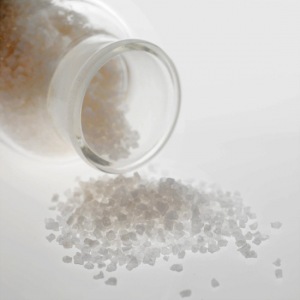Tag Archives: drug enforcement agency
Zombie Apocalypse and the ‘bath salts’ link: 34 states already impacted per DEA
 The zombie apocalypse that America and Canada is said to be experiencing this week due to ‘bath salts’ didn’t happen overnight, as some might think.
The zombie apocalypse that America and Canada is said to be experiencing this week due to ‘bath salts’ didn’t happen overnight, as some might think.
In fact, news released on Friday show that this law enforcement problem has been occurring around the country long before the Causeway cannibal face-eating attack in Miami, or the other cannibalistic acts in California, Canada or Maryland. In fact, law enforcement and medical personnel in as many as 34 states have been battling this growing ‘zombie apocalypse’ drug problem for quite some time.
The United States Drug Enforcement Agency really started to sit up and take notice of synthetic designer drugs in 2009, when so-called “fake pot” began making the rounds under the names K-2 and Spice, among others. Two reports about one of the key drugs in that product caught the DEA’s attention that year.
And thanks to poison control centers and hospitals joining law enforcement in making reports to the DEA, about the increases they began to see in those using the so-called “fake pot” products, a better picture began to emerge of the dangers currently being seen now, allegedly.
Reports of anxiety attacks, convulsions, elevated heart rates, increased blood pressure, as well as disorientation were being experienced in growing numbers. And fortunately 16 states listened up and took the necessary action to control those so-called fake pot drugs. But that was just the beginning, with recreational drugs known as ‘bath salts’ soon following.
By 2010 a key drug in both products had brought as many as 338 cases to their attention. Those numbers jumped in less than a year in 2011, when 911 cases were noted, and the problem had grown to impact as many as 34 states.
Almost one year ago this month, the New York Division of the DEA, under the leadership of Special Agent in Charge John Gilbride, finally took down a major ‘bath salts’ distributor, hoping to curb the recreational drug availability that is used at raves and as a recreational drug.
The dangerous substance is purchased at retail shops, gas stations and other businesses due to being labeled deceptively as bath salts, which are given many different names, including “Aura,” “Goodfellas,” “Ivory Wave,” “Russian River” and “Xtreme,” though there are many more names used as well.
The drug is typically snorted as powder or taken as a pill, according to the DEA. It is also injected intravenously and smoked by users who experience symptoms that range from panic attacks and increased heart rates to delusions and psychotic episodes. And if the toxicology screen in Miami comes back to reveal bath salts in the MacArthur “Causeway cannibal” attack, the adverse effects experienced will grow to include face-eating among other things.
By September of 2011, the DEA had heard enough negative reports on the adverse symptoms being experienced by those using the fake bath salts products labeled “Not for human consumption” that they immediately exercised their authority to control the three drugs most concerning: Mephedrone, MDPV and Methylone.
And they were not alone, as 33 states had now grown concerned enough to either ban or control the products containing these substances, which are usually labeled as “bath salts” or “plant food.” Five short months later, in February of this year, the DEA extended their control of this dangerous group of chemicals by six months, which by the way, is also in the so-called “fake Pot” products.
Miami’s face-eating attacker Rudy Eugene was said to be hooked on marijuana by one of his friends. It is unclear if he was possibly using the so-called “fake pot” that contains this dangerous drug under the watchful eye of the DEA or if it was a ‘bath salts’ product instead that may have resulted in the horrific zombie like attack on Ronald Poppo.
